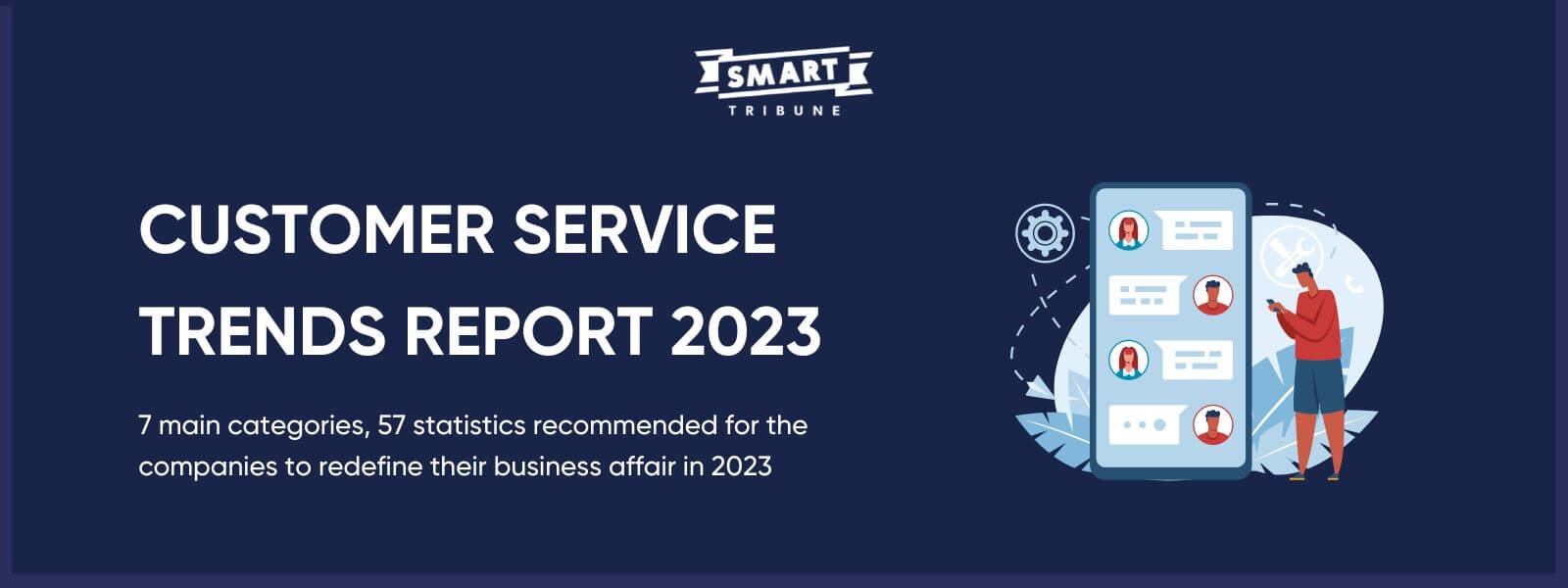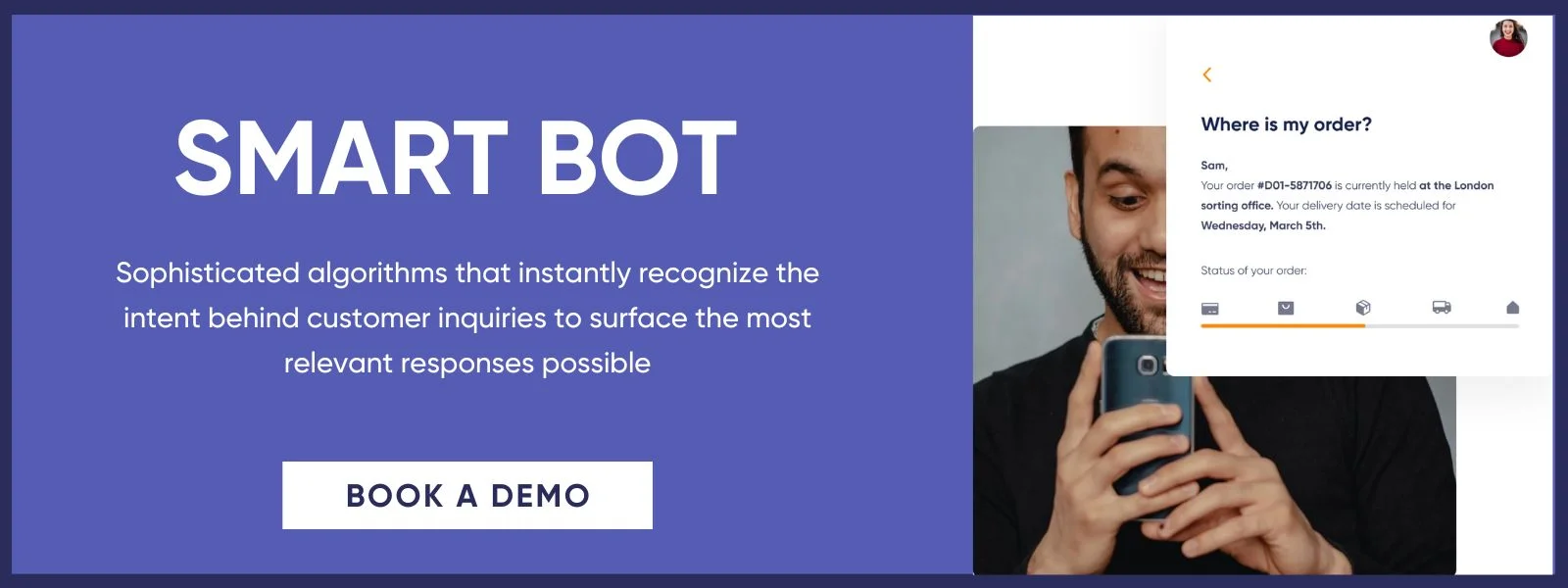
On NOVEMBER 8, 2021
Best Practices for Building a Digital Customer Experience
In the last year alone, total online purchases peaked at 37.1% of total retail sales in the UK. And this number is poised to grow as the world becomes increasingly digital. With that comes an uptick in customer interactions happening online. If you want to keep your customers happy at every point along their journey with your brand online, creating a frictionless digital customer experience should be your number one priority. Keep on reading to learn how.
Digital customer experience: Definition and benefits
Qualtrics defines the digital customer experience as “the aspect of your [customer experience] journey that deals with online platforms such as mobile and desktop, and with digitally-mediated experiences, such as owned apps and social media content.”
In other words, any brand today with an online presence—across various platforms and devices—should be thinking about how to make a great digital customer experience a top priority. And although the digital customer experience has been a topic of conversation for a number of years now, the COVID-19 pandemic truly accelerated digital transformation in a remarkable way.
So much so that many brands today feel as though winning the attention and long-term loyalty of their customers comes down to competing on the basis of customer experience alone. But there’s no longer a moment to spare. In fact, 55% of businesses that have not fully embraced digital transformation believe that they have less than one year before their market share and profits begin to suffer if they don’t begin optimising their digital presence now.
What is digital customer experience?
More simply stated, digital customer experience is all about the experience you create for your customers whenever they interact with your brand across various digital channels. For some businesses, like e-commerce-only retailers, the digital customer experience can be the ‘make or break’ factor. Why? Because the digital world is the only place where customers can interact with those brands. So if you don’t get it right and make it a priority in your digital strategy, you only stand to lose.
And while the digital customer experience encompasses every one of your brand’s external-facing digital touchpoints—from social media to customer service and from marketing emails to your brand’s website—it is just as much about what customers can’t see either. The best digital CX strategies often include making investments in optimizing critical back-end processes, like reducing page load times or improving your website’s SEO strength.
What are the benefits of a successful digital customer experience?
There are numerous reasons why nailing your brand’s digital customer experience should be a priority today. Here are the top five that come to mind:
- Improved customer retention: Customer experience is a more powerful driver of customer loyalty than both ‘brand preference’ and ‘price’ combined. According to Gartner, customer experience drives over two-thirds of customer loyalty.
- Decreased customer churn: Customer churn (i.e. how many customers stop using your products or services or deflect to a competitor brand) is something that all brands want to minimise whenever possible. And naturally, if your digital CX strategy is aimed at improving customer retention and loyalty, it will also push your churn rate down at the same. This means you won’t be held hostage to hunting for new customers all the time—and paying high customer acquisition costs to do so—and, instead, can dedicate more time and energy on nurturing existing customer relationships.
- Increased customer lifetime value (LTV): While no brand should get in the habit of thinking of customers purely as numbers, a specific value can be ascribed to each new customer you convert. And that value grows the longer a customer remains loyal.
Customer lifetime value is a way of understanding the monetary value of a customer relationship with a brand over time. At the very least, a brand should aim to retain customers long enough to break even on customer acquisition costs. But ideally, they should stay focused on nurturing those relationships because it’s a lot less expensive to retain an existing customer than to search for a new one. This helps explain why a recent study found that companies focused on improving the customer experience saw an increase in customer loyalty (92%) and a rise in customer lifetime value (84%).
Long story short: By taking steps to improve the digital customer experience, you not only boost retention—and, conversely, minimise customer churn—but also generate more long-term value out of every customer relationship. That’s just good business.
- Greater brand equity: The Branding Journal defines brand equity as “the value of a brand…[based on] the simple difference between the value of a branded product, and the value of that [same] product without that brand name attached to it.” As such, brand equity is a unique mix of brand loyalty, brand awareness, brand association, and brand identity as well as the perceived quality of the products and services you offer. It should, therefore, come as no surprise that experience-driven businesses typically see 1.5x higher YoY growth around customer retention, repeat purchase rates, and customer LTV.
- More revenue growth: The customer experience can have a big impact on whether or not customers ultimately decide to spend money with or remain loyal to your business. In fact, PwC found that 73% of shoppers find customer experience to be an important factor in their buying decisions. Knowing this—and also knowing that every business is on a constant quest for revenue growth—doubling down on the digital customer experience simply makes a tremendous amount of business sense.
“Exceptional customer service is a non-negotiable for any business that harbours severe growth ambitions."
— Scott Nelson, CEO at MoneyNerd
6 tips for improving the digital customer experience across the entire customer journey
1. Create an omnichannel experience
Providing an omnichannel customer experience—one that’s consistent across all digital and real-world touchpoints—should be the goal of every brand today. Why? Because brands with effective omnichannel customer engagement strategies often retain around 89% of customers, while those lacking in that department only manage to keep just 33% of their customers.
This goes beyond simply maintaining a consistent look, feel, voice, and tone across every one of your brand’s touchpoints. Creating an omnichannel customer experience is also about making the leap from one digital experience platform, channel, or device to another as frictionless as possible. In other words, regardless of where your customers interact with your brand, they should always feel immersed in your brand’s experience. Any disconnect along the way could spell trouble.

2. Deploy customer self-service solutions
Sometimes people like having the option of speaking with a customer service agent if they feel like a conversation with a human being will lead to a faster resolution. But when people have simple questions—those that don’t require human interaction—they typically prefer finding answers to their questions on their own. In fact, it has been found that 67% of customers prefer customer self-service solutions versus picking up the phone to call customer service.
Investing in intelligent customer self-service tools—like dynamic FAQs, AI-powered chatbots, and in-context support widgets—can help you meet customer needs halfway, offering them a new way to be autonomous and efficient in their search for relevant and timely information. It’s also a great way to give your customer service team air cover after business hours, as these smart solutions work around the clock.
And if that’s not enough to convince you, how about this: 59% of consumers believe customer self-service options make their customer service experience better. Just weave them in as part of your broader customer service strategy—friendly and helpful customer service agents included—and you’ve got yourself a winning combination for happy customers.
3. Offer strategic contact escalation
Although customer self-service solutions can answer up to 70% of customers’ most frequently asked questions whenever they come to your website for help, they can’t resolve every query that comes up—especially more complex customer issues. Sometimes a little bit of human intervention is needed.
Fortunately, well-trained customer self-service solutions are typically smart enough to know, after having already exhausted all of their pre-programmed options, when to pass along a customer to a living, breathing customer service agent. And although these solutions may not be able to tackle every customer issue head on, they nonetheless provide reassurance every step of the way and, as a result, help reduce the amount of frustration customers experience.
But aside from streamlining the escalation process, these solutions can help optimise an agent’s time, too. For instance, it has been found that 51% of agents working without AI-powered tools spend most of their time on mundane tasks—which is not a good use of an agent’s time. However, if you let customer self-service solutions sweep up the simple queries, your agents will have plenty of time to handle issues that need their dedicated attention.
4. Invest in UX enhancements
A clunky user experience makes it unnecessarily difficult for customers to do whatever it is they need to do when they visit your website, including even the simplest of tasks. And the harder you make it for customers to find information or even make transactions, the more likely they’ll clog up your customer service team’s pipeline asking for help. Therefore, taking the time to revisit your site’s or app’s user experience regularly can:
- Reduce contact center call volume
- Increase customer satisfaction
- Boost conversion rates
- Driver greater revenue growth
And if you’re unsure where to start, look at your data. For example, if a specific landing page has a low conversion rate, it means there’s a problem with the user experience. The messaging may be off or CTA buttons may be too sparse. Whatever the case may be, use the data you have available to make smart and effective UX improvements versus simply trusting your gut.
5. Make personalisation a priority
Whether you have ten or tens of thousands of customers, it’s your job to offer a personalised experience to each and every one of them. Considering that 56% of customers are willing to share personal information if it leads to better customer experience, you’d be silly not to grab every little piece of data and use it to your advantage.
But keep in mind that personalisation isn’t just a nice-to-have element anymore. Forty-eight percent—nearly half—of consumers have said they’ve bounced from a website because they felt it was “poorly curated” for them. Adding those little touches throughout the digital customer experience shows that you legitimately care about your customers’ wants and needs. And when done right, it can really pay off—beyond customer happiness alone.
6. Listen to customer feedback
You won’t always get everything right. Brands, like humans, are not infallible. And your customers typically understand that, which is why they are, more often than not, happy to share feedback—whether the digital customer experience is great or if there could be room for improvement. It’s important to remember that your customers are your biggest advocates. But failing to embrace their feedback with open arms can backfire dramatically—and if left to fester for too long, it could spell the difference between keeping a loyal customer or losing one for life. So, seek out every opportunity to glean customer feedback—whether through CSAT surveys or even via your social media channels—and then act on it. It will make a difference.
“Listen to your customers or you will have none."— Kevin Miller, CEO and Co-founder at GR0
Useful tools for optimising the digital customer experience
It can be difficult to know whether or not your digital customer experience is performing at full capacity. Thankfully, there are a lot of handy tools available that can provide useful data and insights around what you’re doing well as well as what you could be doing better.
Heat mapping
One of the most effective ways to understand how your customers behave when they visit your website is by using a heat mapping tool. Unfortunately, not all tools are created equal. Be sure to look for one that provides details into your site visitors’ mouse movements, scrolls, clicks, and taps. Software like Hotjar, Mouseflow, and Smartlook are all excellent options—and offer both paid and free versions.
CRM tools
According to Salesforce, customer relationship management (CRM) “is a strategy that companies use to manage interactions with customers and potential customers. CRM helps organisations streamline processes, build customer relationships, increase sales, improve customer service, and increase profitability.” It’s all about keeping a pulse on every customer interaction to minimise customer churn at all costs.
An example of where this comes in handy is when customers find themselves repeating their issues over and over again to different customer service agents. Using an effective CRM system will allow you to capture this information once, so that other agents interacting with this customer—whether or not to work through the same issue—have a leg up in providing a relevant and personalised customer service experience.
Customer self-service
We’ve already spoken about the many benefits of customer self-service a number of times (including above), so we won’t belabour the point. Just remember that customer self-service can come to the rescue as a welcome addition to any end-to-end customer service strategy. They allow customers to be more autonomous in their search for information while also minimising the unnecessary influx of simple, FAQ-oriented requests into customer service teams.
“Customer service is more important now than it ever has been. We don’t have the luxury of greeting someone in person. We have to make sure they are acknowledged in each step of the buyer's journey. [So] make all communication personal."— Oliver Walsh, Co-Founder at ASYSTEM
A/B testing
Simply put, A/B testing is a way to test and measure the performance or effectiveness of different variations of your website to different customers, typically in an effort to see what variations boost conversion or engagement. Tools like Google Optimize, Freshmarketer, or Optimizely allow you to assign a ‘control’ and a ‘variation’ of your testing parameters so that, after a set period, you can see which performed better. It’s a great way to validate your assumptions with real user data before committing resources and budgets to changes that don’t end up driving the desired impact.
Behavioural analytics
Understanding what makes your customers tick—including why they move about the way they do—whenever they visit your site can help you tailor your digital customer experience in a way that better addresses their needs head on. Tools like Google Analytics, for example, offer a wealth of behavioural insights, including how long customers spend on your website (session duration) and how many bounce (leave the page) without making a purchase or fulfilling some kind of transaction.
Smart Tribune, your key to an improved digital customer experience
If you’re looking for a way to give your digital customer experience a boost, any one of Smart Tribune’s bespoke customer self-service solutions could be the answer. Our customer service implementation experts can help you identify the best path for creating a frictionless customer experience that has been proven, time and time again, to improve customer satisfaction at every point along the customer journey, from acquisition to purchase—and beyond.
Not sure where to begin? Schedule a demo to learn how you can take your digital customer experience to the next level by implementing customer self-service solutions.





.png)



